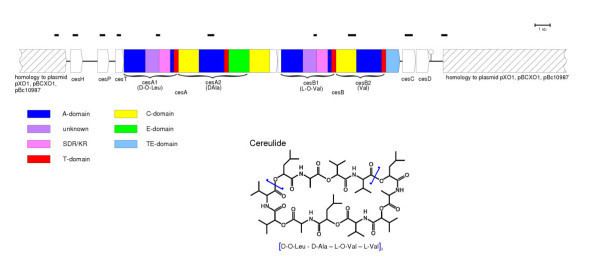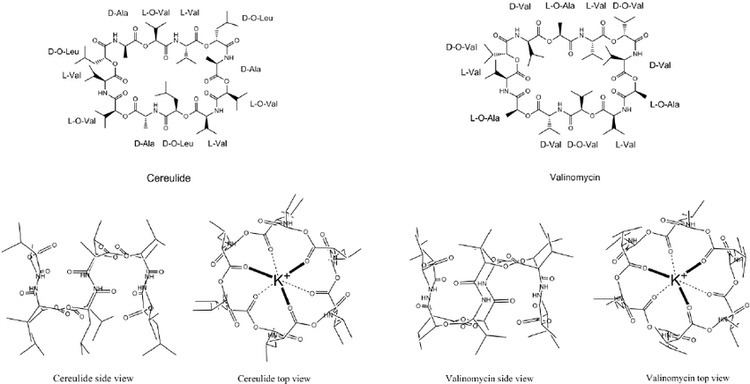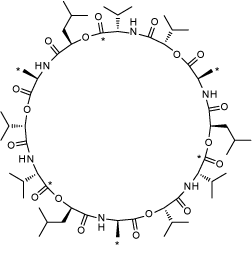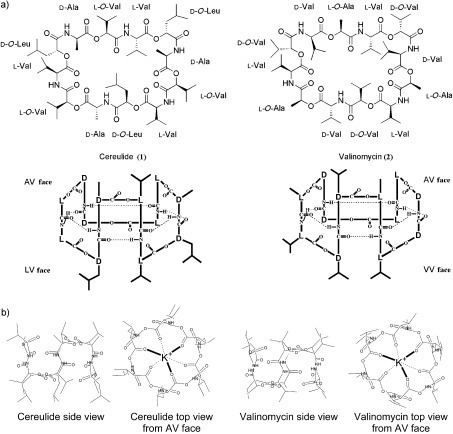 | ||
Cereulide is a toxin produced by Bacillus cereus. A cyclic dodecadepsipeptide resembling valinomycin, it contains three repeats of four amino acids: D-Oxy-Leu—D-Ala—L-Oxy-Val—L-Val. It is a potent cytotoxin that destroys mitochondria. Cereulide acts as ionophore with a high affinity to potassium cations. Exposure to cereulide causes loss of the membrane potential and uncoupling of oxidative phosphorylation in the mitochondria. The spores of cereulide-producing strains of B. cereus are manyfold more heat resistant than spores of cereulide non-producers. It has no loss of activity upon autoclaving, cooking, or baking.

In addition to its cytotoxicity, cereulide causes nausea and vomiting. This effect is believed to be caused by its binding and activation of 5-HT3 receptors, leading to increased afferent vagus nerve stimulation.






